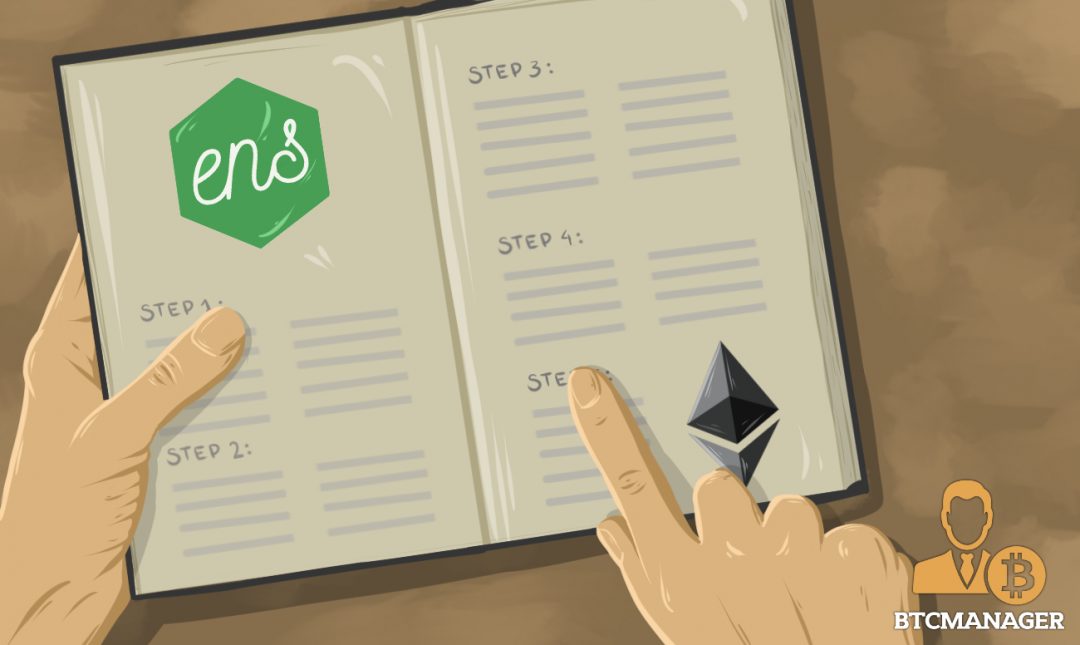A Guide to Bidding on Personalized .eth Domains for Ethereum Wallet Addresses

The Ethereum Name Service, commonly referred to as ENS, is an effort to make blockchain addresses readable and accessible; it allows users of the cryptocurrency to send and receive transactions using the .eth top-level domain instead of long hexadecimal addresses, for instance “aardvark.eth.” In the spirit of Ethereum’s decentralized nature, ENS allows anyone to participate in the domain bidding process and makes the entire process transparent.
There is a minimum imposed bid of 0.01 ETH that needs to be placed on the .eth domain. At the end of the bidding process, the person with the maximum bid gets to keep the domain name for the duration specified by the registrar.
One thing to note, however, is that only certain wallets support this feature, as it is a relatively new addition to the blockchain. MyEtherWallet is a popular Ethereum wallet that natively supports the ENS interface. Alternatively, one can run a geth node on their machine, but given the constraints of running a full node, using a wallet service is generally preferred. Regardless, if an ENS domain is to be set up using a node, the ENS documentation covers the process in quite detail.
For the purposes of this article, we shall bid on a new domain using MyEtherWallet since the process is simpler and more approachable. The relevant ENS section of the website can be found by following this link or by clicking on the “ENS” tab on the MyEtherWallet homepage. On this page, we can search for available domains and then decide to bid on them by following these steps:
- Authenticate an existing Ethereum wallet with MyEtherWallet,
- Select a bid amount that is at least 0.01 ETH,
- Select a bid mask amount that hides the previous bid value. The amount entered here is not actually counted towards the auction and only used as a “mask,”
- Note down the secret phrase provided, keeping a backup of all information relevant to the bidding process.
After these steps have been completed, anyone will be able to bid on the domain for the next 72 hours. Post that, bidders will have a 48-hour window to disclose their bid amount publicly. The person with the highest disclosed bid will be awarded the domain, but will only be bound to pay the amount of the second highest bid. The process of disclosing one’s bid can be done on MyEtherWallet itself.
Assuming you are the highest bidder for the domain, you will become its owner after a period of roughly five days. Once you have assumed ownership of the domain, it needs to be configured. This process involving the Ethereum blockchain is also primarily automated with MyEtherWallet’s ENS service. Thus, the final setup can be summarized as follows:
- Obtain your domain’s NameHash information by using etherscan.io,
- Navigate to the Contracts tab in MyEtherWallet, under which, two different submissions need to be completed,
- For the first one, select the “ENS – Registry” option in the “Select Existing Contract” dropdown menu. Next, select “setResolver” in the “Read/Write Contract” section.
- Paste the domain’s NameHash into the “node” section and “0x5ffc014343cd971b7eb70732021e26c35b744cc4” into the “resolver address” field and submit the contract,
- For the second submission, we have to set the address. Start by selecting “ENS – Public Resolver” under the “Select Existing Contract” menu. Next, “setAddr” from the “Read/Write Contract” dropdown,
- Paste the domain’s NameHash into the “node” field again and paste your Ethereum wallet address into the “addr” field. Submit the contract and wait for verification.
With that, we have set up a fully functioning .eth domain that can now be used to receive payments from anyone on the Ethereum network.













